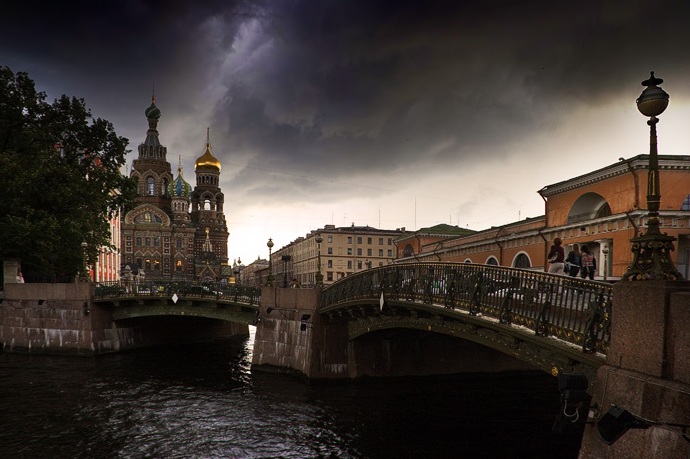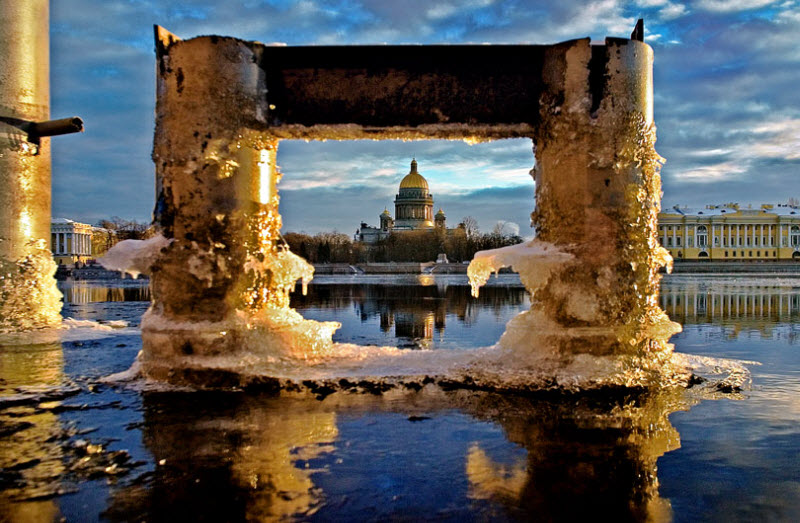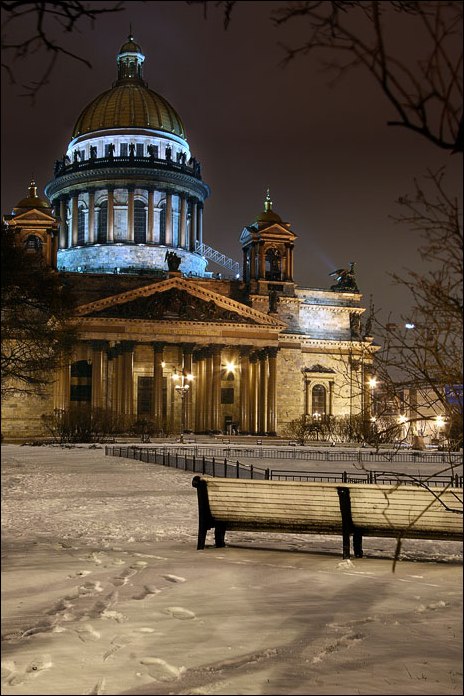St. Petersburg is a second largest Russian city after Moscow. It’s a very beautiful city and carries the name of the “cultural capital of Russia”. In today’s lesson of the series “Read and listen in Russian” we present you a short story of St. Petersburg’s foundation.
Listen to the audio and follow the transcript.
Санкт-Петербу́рг был осно́ван царём Петро́м I в 1703 году и на́зван в честь свято́го апо́стола Петра́. Ме́сто, вы́бранное для строи́тельства, не представля́ло большо́й це́нности, но для царя́ име́ло стратеги́чески ва́жное значе́ние – дава́ло вы́ход к Балтийскому мо́рю.
St. Petersburg was founded by Tsar Peter I in 1703 and is named after the holy apostle Peter. The place chosen for the construction was not of great value, but for the tsar it was of strategic importance – it gave the outlet to the Baltic Sea.
Поско́льку в то вре́мя продолжа́лась Се́верная война́ (1700-1721), строи́тельство го́рода на́чалось с кре́пости. Да́ту заложе́ния кре́пости и при́нято счита́ть официа́льной да́той рожде́ния го́рода.
Since at that time the Northern War continued (1700-1721), the construction of the city began with a fortress. The date of the foundation of the fortress is considered to be the official birth date of the city.
Вопреки́ распространённой леге́нде, что го́род стро́ился на костя́х крепостны́х, иссле́дования, проведённые в 1950-х года́х, говоря́т о том, что го́род стро́ился во́все не крепостны́ми, а вольнонаёмными рабо́тниками, и рабо́ты вели́сь от трёх до пяти́ ме́сяцев в году́, по́сле чего́ арте́ли уходи́ли зимова́ть домо́й.
Contrary to the widespread legend that the city was built on the bones of serfs, the studies conducted in the 1950s indicate that the city was built not by serfs, but by civilian workers, and the work was carried out from three to five months a year, after which the artels left to spend the winter at home.
Ка́мня для строи́тельства не хвата́ло, и тогда́ Пётр запрети́л возведе́ние ка́менных домо́в по всей Росси́и, а все входя́щие суда́ и экипа́жи, должны́ бы́ли плати́ть “нало́г” в ви́де кру́пных камне́й.
There was not enough stones for construction, and then Peter forbade the building of stone houses throughout Russia, and all incoming ships and carriages had to pay a “tax” in the form of large stones.
Петербу́ргу, постро́енному на вы́сушенных боло́тах, бо́льше всего́ неприя́тностей доставля́ли наводне́ния. Пе́рвое случи́лось уже́ спустя́ 3 ме́сяца по́сле основа́ния го́рода, вода́ подняла́сь бо́льше, чем на два ме́тра. А са́мым значи́тельным и разруши́тельным бы́ло наводне́ние 1824 года. Вода́ подняла́сь бо́лее, чем на 4 ме́тра. Бы́ли разру́шены бо́лее 400 домо́в и повреждены́ бо́лее 3,5 ты́сяч. Поги́бли не́сколько ты́сяч голо́в скота́, утону́ли от 200 до 600 челове́к, мно́гие пропа́ли бе́з вести, так как тру́пы бы́ли унесены́ водо́й в Фи́нский зали́в.
The most trouble to Petersburg, which was built on the dried up swamps, used to be brought by the floods. The first one happened right after 3 months since the city was founded, the water rose more than two meters. But the most significant and destructive was the flood of 1824. The water rose more than 4 meters. More than 400 houses were destroyed and more than 3.5 thousand damaged. Several thousand heads of cattle perished, 200 to 600 people drowned, many were missing, as corpses were carried away by water to the Gulf of Finland.
В 1712 году столи́ца Росси́йской импе́рии была́ перенесена́ из Москвы́ в Петербу́рг, хотя́ никаки́х прика́зов о перено́се столи́цы царь не отдава́л, про́сто в 1712 году в Петербу́рг перемести́лись все официа́льные учрежде́ния и ца́рский двор. Го́род официа́льно остава́лся столи́цей до 1918 года, лишь на вре́мя ца́рствования Петра́ II столи́ца была́ вре́менно возвращена́ в Москву́.По сей день Санкт-Петербу́рг ча́сто неофициа́льно называ́ют се́верной столи́цей.
In 1712, the capital of the Russian Empire was moved from Moscow to St. Petersburg, although the tsar did not give any orders for the transfer of the capital, just in 1712 all the official institutions and the royal court moved to Petersburg. The city officially remained the capital until 1918, only during the reign of Peter II the capital was temporarily returned to Moscow. To this day, St. Petersburg is often unofficially called the northern capital.








Team says:
thans